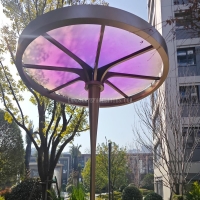Welcome to the website for landscape facilities products and knowledge.
What are the most common installation mistakes for landscape bar counters, and how can they be avoided?
Installing a landscape bar counter can transform your backyard into an entertainment hub. However, a single installation error can lead to costly repairs, structural failure, or a completely unusable space. Many DIY enthusiasts and even some professionals fall prey to common pitfalls that compromise the project's longevity and safety. By understanding these frequent mistakes, you can ensure your outdoor bar is built to last for years of enjoyment.
The first and perhaps most critical mistake is improper planning and measurement. Rushing to build without a detailed plan that accounts for utility lines, space for movement, and local building codes is a recipe for disaster. A miscalculation in height or depth can make the bar uncomfortable to use. Always start with a precise site plan, check for underground utilities, and ensure your design adheres to all municipal regulations.
The second common error is neglecting drainage and moisture protection. An outdoor bar is constantly exposed to the elements. Failing to incorporate a slight slope on the countertop for water runoff or forgetting to use waterproof sealants on wood and masonry will lead to rapid deterioration, warping, and water damage. Always use materials rated for outdoor use and seal every seam and surface meticulously.
Third is the failure to create a level and stable foundation. An uneven base might not be immediately obvious, but it will cause the entire structure to shift over time, leading to cracks in the countertop and misaligned doors. Never assume the ground is level. Use a spirit level throughout the process and invest time in creating a perfectly level concrete footing or paver base to support the weight.
The fourth mistake is choosing the wrong materials. Indoor cabinetry and countertops are not built to withstand sun, rain, and temperature fluctuations. Using untreated wood, MDF, or certain types of stone that are porous or prone to cracking in freeze-thaw cycles will result in a ruined bar within a single season. Opt for weather-resistant materials like stainless steel, teak, marine-grade polymer, or properly sealed granite and quartzite.
Finally, many installers overlook the importance of structural support for the countertop, especially for heavy materials like stone or concrete. A simple frame built for a lightweight counter will sag under the weight of a solid slab, leading to catastrophic failure. Ensure the base cabinetry or support structure is engineered to handle the specific weight and dimensions of your chosen countertop material.
By avoiding these five common mistakes—poor planning, ignoring drainage, an unlevel base, incorrect materials, and inadequate support—you can successfully install a beautiful and functional landscape bar counter. Taking the time to do it correctly the first time will save you money and ensure your outdoor living space remains the centerpiece of your garden for many seasons to come.
Related search:

Recommendation
Metal frame with gradient color acrylic combined with high-end shading landscape facilities